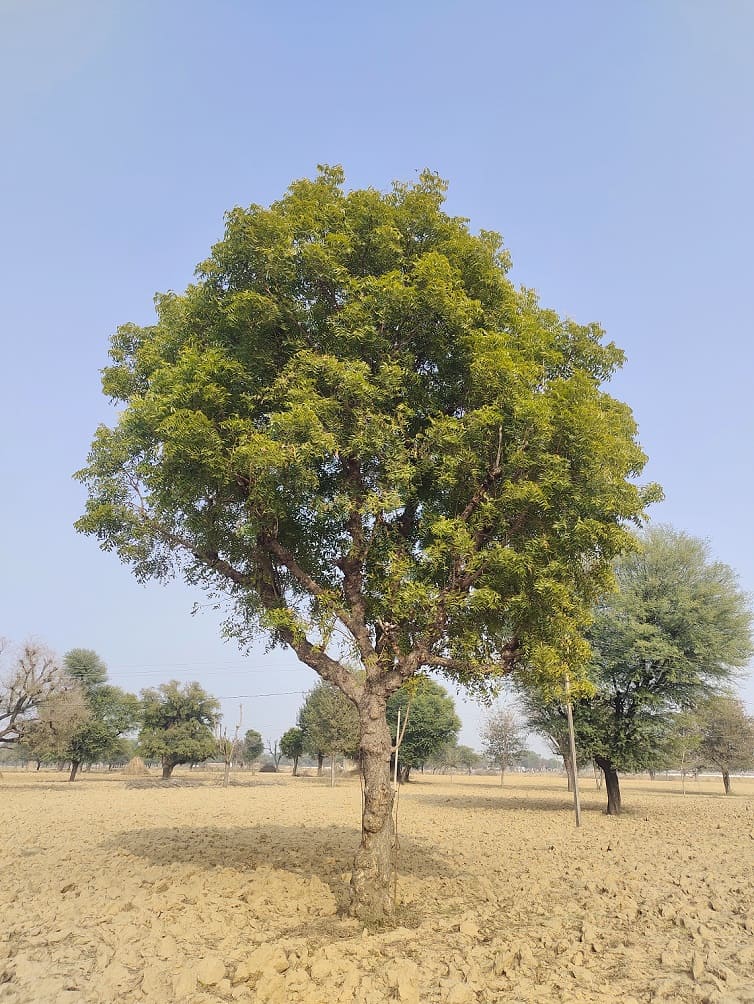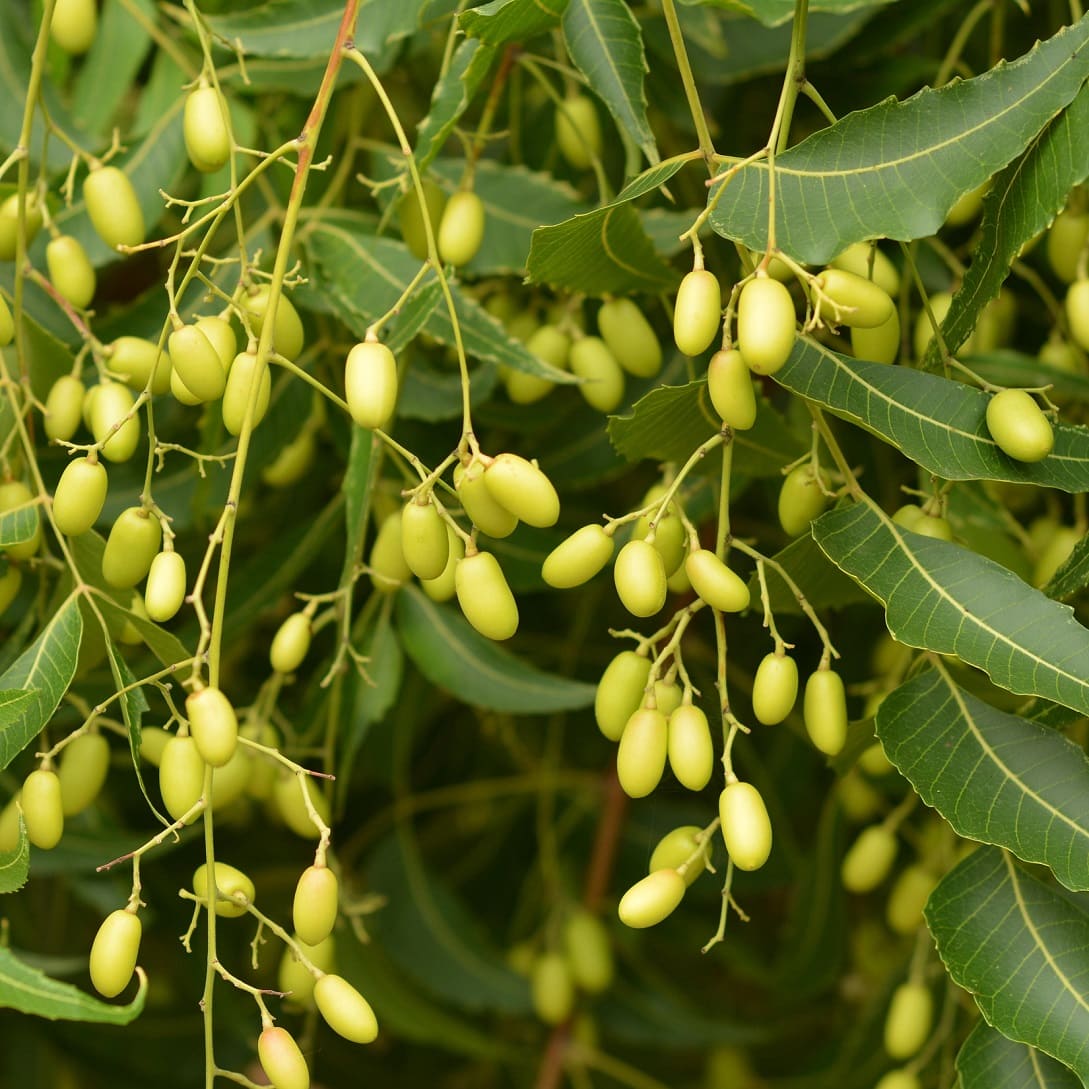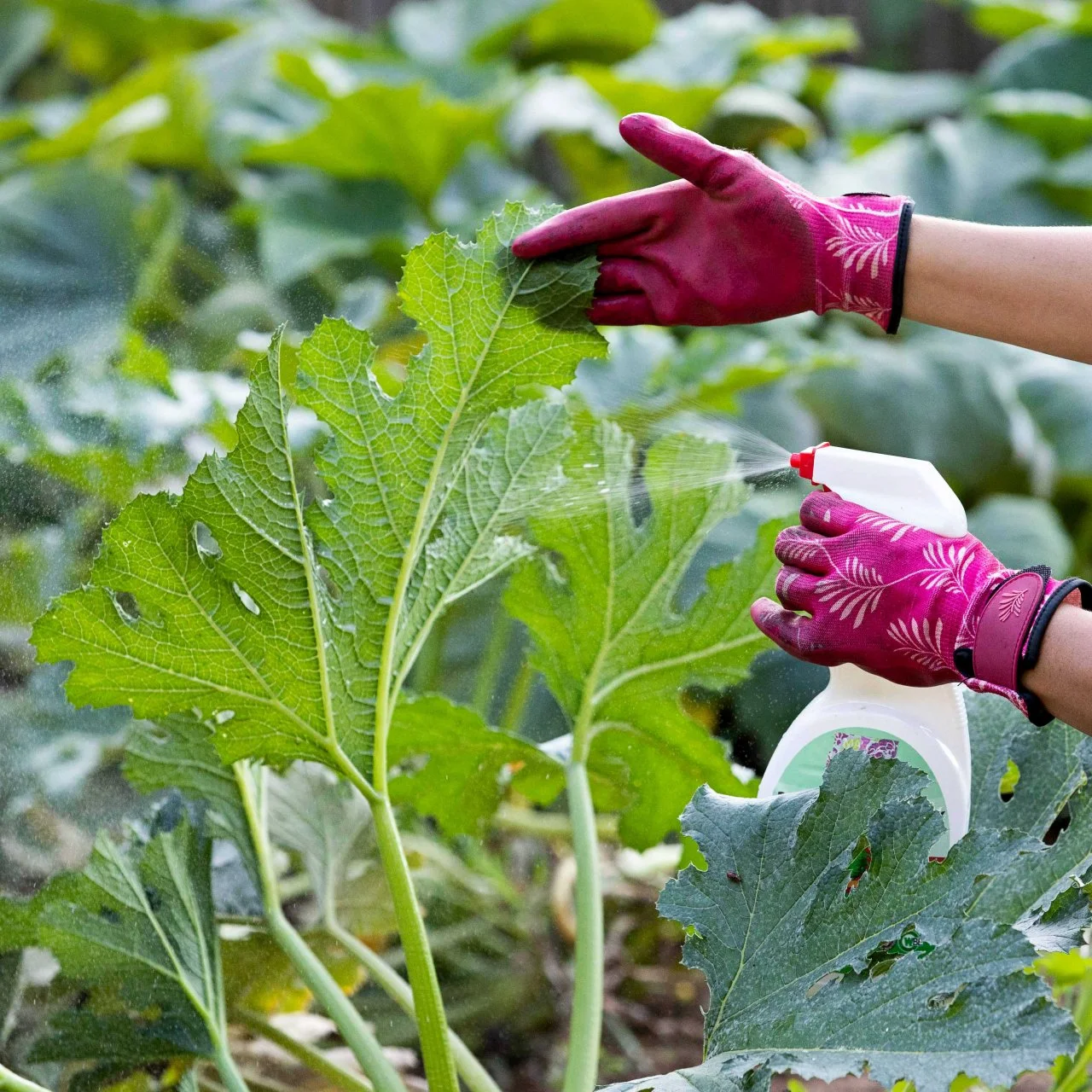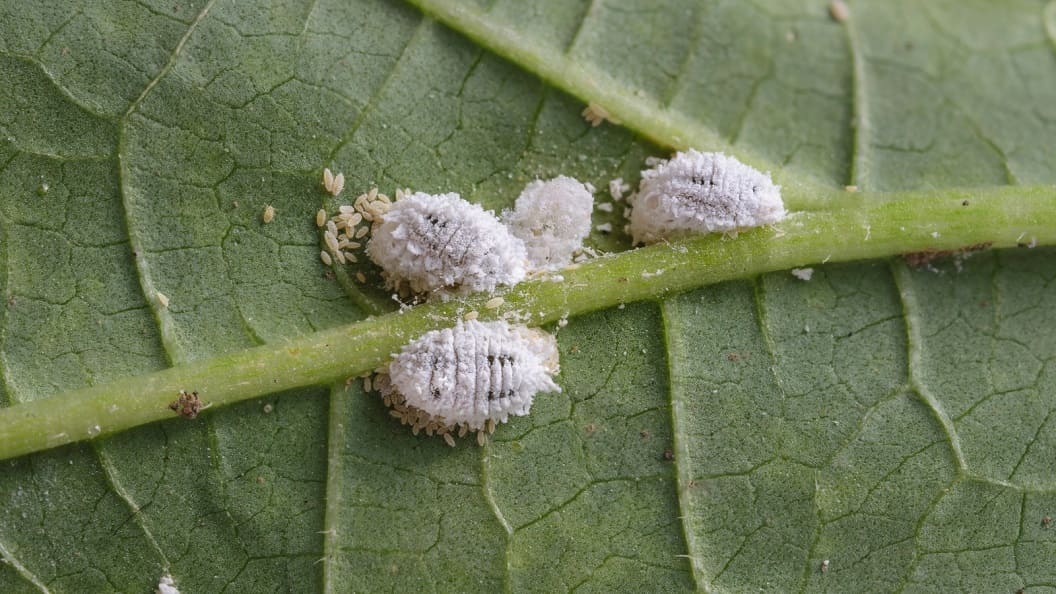Picture this: You step into your garden on a perfect morning, coffee in hand, ready to admire your thriving plants. Instead, you’re greeted by aphids clustering on your roses, spider mites webbing your tomatoes, and mysterious spots dotting your cucumber leaves.
Sound familiar? If you’ve been down the rabbit hole of organic gardening solutions, you’ve probably heard whispers about a golden elixir that promises to solve these problems naturally. That elixir is neem oil, and while it’s not quite the miracle cure some claim it to be, it’s pretty darn close.
By the end of this guide, you’ll understand exactly how to harness neem oil’s power in your garden, when to use it (and when not to), and how to avoid the common mistakes that leave many gardeners frustrated and wondering why “this stuff doesn’t work.”
Whether you’re battling your first aphid invasion or you’re a seasoned gardener looking to refine your organic arsenal, this comprehensive guide will give you the confidence to use neem oil effectively and safely.
What Is Neem Oil and Why Should You Care?
Neem oil comes from pressing the seeds of the neem tree (Azadirachta indica), a tropical evergreen native to India and Southeast Asia.

For centuries, this tree has been revered in traditional medicine and agriculture—so much so that it’s often called the “village pharmacy” in rural India. The oil extracted from its seeds contains a powerful compound called azadirachtin, which is nature’s own pest control system.

But here’s what makes neem oil special: unlike synthetic pesticides that work like a sledgehammer, neem oil operates more like a strategic chess move. It doesn’t just kill bugs on contact (though it can do that too). Instead, it disrupts their entire life cycle, making it nearly impossible for pest populations to establish themselves in your garden.
Think of azadirachtin as a master of disguise. When insects consume it, this compound mimics their natural hormones, essentially tricking their bodies into thinking they’re not hungry, can’t reproduce, or shouldn’t molt to the next life stage. It’s biological warfare at its finest, and it’s been happening in nature for millions of years.
Understanding the different types of neem oil products available will save you both money and frustration. Pure, cold-pressed neem oil contains the full spectrum of active compounds, including azadirachtin.
However, you’ll also find “clarified hydrophobic extract of neem oil” on store shelves, which has had the azadirachtin removed and works primarily through suffocation. While less expensive, these extracted products lack the hormone-disrupting power that makes neem oil so effective against persistent pest problems.
The Science Behind the Magic: How Neem Oil Really Works
Understanding how neem oil works will make you a much more effective user. Neem oil operates through multiple mechanisms, which is precisely why insects struggle to develop resistance to it.
- Hormone Disruption: The azadirachtin in neem oil interferes with insects’ ecdysone hormone, which controls molting and reproduction. Imagine trying to grow up but never being able to graduate to the next grade—that’s essentially what happens to pest insects.
- Antifeedant Effects: Neem oil makes treated plants taste terrible to insects. It’s like adding the world’s most effective hot sauce to your plants, except only the bad guys can taste it.
- Physical Suffocation: When applied as a spray, neem oil can coat soft-bodied insects like aphids and spider mites, blocking their breathing holes and effectively suffocating them.
- Systemic Protection: When used as a soil drench, plants absorb neem oil through their roots and distribute it throughout their tissues, providing inside-out protection.
- Fungal Prevention: Neem oil creates a protective barrier on leaf surfaces that prevents fungal spores from germinating, making it effective against diseases like powdery mildew and black spot.
This multi-pronged approach is why insects rarely develop resistance to neem oil, unlike many synthetic pesticides that target only one biological pathway.
However, this also means neem oil works more slowly than contact pesticides. You’re playing the long game here, disrupting entire generations of pests rather than just killing the ones you can see today.
Your Complete Neem Oil Application Guide
Choosing the Right Neem Oil
Not all neem oil products are created equal, and understanding the differences can mean the difference between success and disappointment.
- 100% Cold-Pressed Neem Oil:
This is the gold standard. Cold pressing preserves the highest concentration of azadirachtin and other beneficial compounds. Look for products containing at least 1,500-3,000 ppm of azadirachtin. Yes, it’s more expensive upfront, but you’ll use less and get better results.
- Clarified Hydrophobic Extract:
These products have had the azadirachtin removed and work primarily through suffocation. They’re less versatile than pure neem oil but can still be effective for immediate knockdown of soft-bodied pests.
- Ready-to-Use vs. Concentrate:
Ready-to-use formulations are convenient but often contain lower concentrations of active ingredients and may have been sitting on shelves for months, reducing their effectiveness. Concentrates allow you to mix fresh solutions and adjust strength based on your specific needs.
Mixing Your Neem Oil Solution
Here’s where many gardeners go wrong. Neem oil and water mix about as well as oil and vinegar in your salad bowl—which is to say, not at all, unless you add an emulsifier.
For foliar applications, start with this proven recipe:
- 1-2 tablespoons pure neem oil
- 1 teaspoon mild liquid soap (castile soap works perfectly)
- 1 gallon warm water
For smaller gardens, scale down proportionally: 1-2 teaspoons neem oil, 1/4 teaspoon soap, and 1 quart warm water.
The mixing process matters more than you might think. Start with warm water around 80°F in your sprayer, add the soap first and mix thoroughly, then slowly add the neem oil while stirring vigorously.
If your neem oil has solidified in cool weather (it does this below 70°F), warm the bottle in a bowl of warm water first. Never microwave it, as heat destroys the beneficial compounds.
Always shake well before and during application—oil naturally wants to separate from water, and you need even coverage for effective pest control.
Mastering the Soil Drench Method
While foliar spraying gets most of the attention, soil drenching with neem oil can be incredibly effective for certain pest problems and offers systemic protection that spraying alone cannot provide.
For soil applications, use a slightly more diluted solution: 1 tablespoon neem oil and 1/2 teaspoon soap per gallon of water. Apply this solution as you would regular watering, ensuring the entire root zone is saturated.

The plants will absorb the neem compounds through their roots and distribute them throughout their tissues, making the entire plant unpalatable to feeding insects.
This method works particularly well for controlling soil-dwelling pests like fungus gnats, root aphids, and nematodes. It’s also excellent for houseplants where you want systemic protection without the mess of spraying indoors. Apply soil drenches every 2-3 weeks during the growing season, or weekly if you’re dealing with an active infestation.
👉 Here’s How to Add Nitrogen to Soil: 18 Quick Fixes + Long-Term Solutions
Application Techniques That Actually Work
Timing truly is everything with neem oil. Apply in early morning or late evening when temperatures are cooler and beneficial insects are less active. The golden rule: never spray during the heat of the day when temperatures exceed 85°F, or you’ll risk burning your plants.
When spraying, think of yourself as a painter trying to cover every surface. Pay special attention to the undersides of leaves where pests love to hide and lay eggs. Start from the bottom of the plant and work your way up, allowing the spray to coat all surfaces without drenching them to the point of runoff.

Weather considerations extend beyond just temperature. Avoid application if rain is expected within 24 hours, during windy conditions that could drift the spray to unintended areas, or when plants are already stressed from drought or recent transplanting.
Before treating your entire garden, always test on a few leaves first and wait 24 hours to check for damage. This is especially important with sensitive plants or new varieties you haven’t treated before.
Understanding Application Schedules and Seasonal Strategies
Successful neem oil use requires understanding that different situations call for different application strategies. During active pest infestations, apply every 7 days for 3-4 weeks to break the pest life cycle completely. For prevention during peak pest seasons, every 14 days is usually sufficient.
- Spring Applications: Begin preventive treatments as soon as new growth emerges. This is when many overwintering pests become active and plants are most vulnerable to early-season damage.
- Summer Maintenance: During hot, dry periods when spider mites and aphids thrive, maintain weekly applications on susceptible plants. However, be extra cautious about heat-related plant damage during peak summer.
- Fall Preparation: Continue treatments through early fall to prevent pests from establishing overwintering sites on your plants.
- Winter and Dormant Season Applications: For deciduous trees and shrubs, apply a stronger dormant oil treatment (up to 4 tablespoons per gallon) during late winter before bud break. This helps eliminate overwintering eggs and spores that could cause problems in the coming season.
What Neem Oil Controls (And What It Doesn’t)
Pest Enemies Neem Oil Conquers
Neem oil excels against soft-bodied insects that feed directly on plant tissues. Aphids, whiteflies, spider mites, mealybugs, and scale insects are particularly vulnerable because they’re easily suffocated by the oil and highly susceptible to azadirachtin’s hormone-disrupting effects.

Caterpillars and beetle larvae represent another sweet spot for neem oil effectiveness. These actively growing, soft-bodied stages are constantly molting and feeding, making them prime targets for neem’s growth-disrupting properties.
Cabbage worms, tomato hornworms, and Japanese beetle grubs will stop feeding and eventually die when they consume neem oil-treated foliage.
Leaf miners present a special case where neem oil’s systemic properties shine. Since these pests tunnel inside leaves where sprays can’t reach them directly, the absorbed neem compounds in plant tissues provide the only effective organic control method.
👉 Here are 50+ Common Christmas Tree Bugs: How to Identify, Prevent, and Get Rid of Them
Diseases Neem Oil Prevents
Neem oil’s antifungal properties make it particularly valuable for preventing powdery mildew, black spot on roses, and various rust diseases. The key word here is “preventing”—neem oil works by creating a protective barrier that prevents spore germination rather than curing established infections.
For fungal disease prevention, consistency matters more than concentration. Regular applications every 10-14 days during humid conditions or periods when diseases typically appear will provide much better results than sporadic treatments with stronger solutions.
What Neem Oil Won’t Handle
Understanding neem oil’s limitations will save you frustration and help you choose the right tool for each job. Hard-bodied adult insects like beetles, wasps, and bees aren’t significantly affected by neem oil, which is actually beneficial for garden ecology since it spares most beneficial insects.
Established fungal infections require more aggressive treatment than neem oil can provide. If your plants already show extensive disease symptoms, you’ll need targeted fungicides to knock back the infection before switching to neem oil for prevention.
Slugs, snails, and other non-insect pests laugh at neem oil. These creatures don’t feed on plant tissues in the same way, so they avoid the primary mechanisms by which neem oil works.

Safety and Environmental Considerations
Protecting Beneficial Insects and Pollinators
One of neem oil’s greatest advantages lies in its selective action against harmful pests while largely sparing beneficial insects.
This selectivity comes from the fact that beneficial insects like ladybugs, lacewings, and predatory wasps don’t typically consume plant foliage, so they avoid ingesting the azadirachtin that makes neem oil so effective against plant-feeding pests.
However, direct contact with wet neem oil spray can harm beneficial insects, so timing and application method matter enormously. Apply treatments in late evening when most beneficial insects have returned to their shelters, and avoid spraying when you can see beneficial insects actively working on your plants.
For pollinators specifically, never spray flowering plants when bees are actively foraging. If you must treat flowering plants, cover the flowers or apply the treatment very late in the evening, ensuring the spray has dried completely before morning foraging begins.
Plant Safety and Sensitivity
While neem oil is generally safe for most plants, certain species and conditions require extra caution. Young seedlings, recently transplanted plants, and any plants showing signs of stress should be treated with diluted solutions or not at all until they’ve recovered.
Some plant families show increased sensitivity to oil applications. Herbs like basil, cilantro, and dill can develop leaf burn more easily, while plants with very hairy or delicate leaves may trap the oil and suffer damage. Always start with lower concentrations on these sensitive species.
Signs of phytotoxicity include yellowing leaves, brown spots, or premature leaf drop appearing within 24-48 hours of application. If you notice these symptoms, immediately rinse affected plants with clean water and reduce concentration for future applications.
👉 Here are 13 Fiddle Leaf Fig Problems and How to Solve Them With Easy Fixes
Storage, Handling, and Environmental Responsibility
Proper storage extends neem oil’s effectiveness and shelf life significantly. Store concentrated neem oil in a cool, dark place away from temperature extremes. Properly stored, quality neem oil maintains its potency for 2-3 years.
However, once mixed with water, neem oil solutions degrade rapidly and should be used within 8 hours for maximum effectiveness.
This degradation characteristic raises an important environmental point: leftover mixed neem oil solution shouldn’t be poured down drains or into waterways. While neem oil itself is biodegradable and relatively non-toxic, it can still harm aquatic life in concentrated amounts.
Instead, dilute any leftover solution further with water and apply it to non-food ornamental plants, or dispose of small amounts on compost piles where it will break down naturally.
When handling concentrate, wear gloves and avoid skin contact, not because neem oil is particularly dangerous, but because it can cause mild irritation in sensitive individuals and has a distinctly strong odor that lingers on skin.
Troubleshooting: When Neem Oil Doesn’t Work
Common Mistakes That Sabotage Success
The most frequent cause of neem oil failure isn’t the product itself, but rather application errors that reduce its effectiveness. Using degraded or improperly stored oil tops this list—neem oil that’s been sitting in a hot garage all summer or mixed solutions that have been stored for days simply won’t work effectively.
Inconsistent application represents another major stumbling block. Neem oil’s strength lies in disrupting pest life cycles, which requires sustained pressure over several weeks. Spraying once and expecting permanent results sets you up for disappointment. Most pest problems require weekly applications for 3-4 weeks to achieve complete control.
Wrong concentration causes problems in both directions. Too little won’t effectively control pests, while too much can harm plants and waste expensive product. Start with lower concentrations and increase gradually if needed, rather than starting strong and potentially damaging sensitive plants.
Perhaps most importantly, many gardeners use neem oil to treat symptoms rather than addressing underlying causes. If your plants are stressed from poor growing conditions, inadequate nutrition, or improper watering, they’ll continue attracting pests regardless of what you spray on them.
When to Consider Alternative Approaches
Sometimes neem oil simply isn’t the right tool for the job. Heavy, established infestations may require a more aggressive initial knockdown treatment before switching to neem oil for long-term prevention. In these cases, insecticidal soap or horticultural oil might provide faster initial control.
Extremely humid conditions can interfere with neem oil’s effectiveness against fungal diseases, making targeted fungicides a better choice during prolonged wet periods. Similarly, some pests like squash bugs or cucumber beetles may require physical barriers like row covers rather than any spray treatment.

Building an Integrated Approach
Neem oil reaches its full potential when integrated into a comprehensive plant health strategy rather than used as a standalone solution. Healthy, vigorous plants naturally resist pest and disease problems better than stressed ones, making soil health, proper nutrition, and appropriate cultural practices your first line of defense.
Encouraging beneficial insects through diverse plantings creates a natural pest control army that works alongside your neem oil treatments. Flowers like marigolds, calendula, and alyssum attract predatory insects that help maintain pest populations below damaging levels.
Rotation between different organic treatments prevents pests from adapting to any single control method. Alternate neem oil with insecticidal soap, beneficial bacteria applications, or physical controls like diatomaceous earth to maintain effectiveness over time.
Regular monitoring allows you to catch problems early when they’re easier to control with gentler methods. A few aphids spotted during weekly garden walks can be managed with targeted neem oil applications, while overlooked infestations may require more intensive interventions.
Measuring Success and Long-Term Benefits
Understanding what successful neem oil treatment looks like helps maintain realistic expectations and proper application schedules. Unlike contact pesticides that produce immediate visible results, neem oil’s effects unfold gradually over 7-14 days.
Look for reduced feeding damage on new growth, declining pest populations, and fewer pest-related plant stress symptoms rather than instant pest elimination.
The true value of consistent neem oil use becomes apparent over entire growing seasons rather than individual applications. Gardens treated regularly with neem oil often develop more stable pest-predator relationships, with lower overall pest pressure and reduced need for interventions over time.
This long-term perspective is crucial because neem oil works best as part of an ecological approach that supports overall garden health rather than simply eliminating unwanted organisms. The goal isn’t a sterile, pest-free environment, but rather a balanced ecosystem where pest populations remain below damaging thresholds.
Your path to mastering neem oil begins with understanding that it’s a preventive, relationship-building tool rather than a quick fix. Start with healthy plants, apply consistently during vulnerable periods, and be patient with the gradual but lasting results this remarkable natural product provides.
The gardeners who achieve the greatest success with neem oil are those who view it as one component of a holistic plant care approach, combining proper cultural practices, beneficial insect habitat, and strategic organic interventions to create gardens that thrive in partnership with natural pest control mechanisms.
